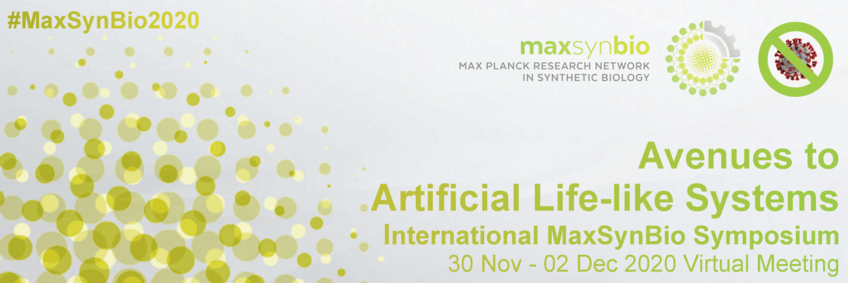
#22 - Gene expression dynamics and variability in synthetic cell populations
David Gonzales (Max Planck Institute of Molecular Cell Biology and Genetics, Dresden)
Tuesday, 01 Dec 21:15 - 22:00 CET
Access to the BigBlueButton rooom for this Mini Talk via the lists for Monday and Tuesday.
Please make yourself familiar with BigBlueButton before you join the Mini Talk - read the instructions.
Abstract
Title: Gene expression dynamics and variability in synthetic cell populations
Author(s): David T. Gonzalesa,b, Naresh Yandrapallic, Tom Robinsonc, Christoph Zechnera,b,d, T.-Y. Dora Tanga,d
Affiliation(s): aMax Planck Institute of Molecular Cell Biology and Genetics, Dresden; bCenter for Systems Biology Dresden; cMax Planck Institute of Colloids and Interfaces, Potsdam; dPhysics of Life, Cluster of Excellence, TU Dresden
Abstract: Biological cell populations provide a platform for single cells to communicate and bridge scales into multicellular systems. These populations are typically heterogeneous and subject to cell-to-cell variability or composed of distinct subpopulations. However, the effect or function of variability has been challenging to study due to the lack of tools that can manipulate variation within multicellular systems. We aim to build synthetic cell populations to study how variability affects population behaviour in a bottom-up approach. Using recent developments in microfluidics [1], we established a platform to generate double-emulsion synthetic cell populations encapsulating cell-free expression systems (CFES). To observe population-level gene expression dynamics, both transcription and translation in single cells were quantified through time using fluorescent RNA aptamers and reporter proteins under confocal microscopy. These synthetic cell populations exhibited low variability in terms of size and its resulting gene expression products. Custom heterogeneous cell populations were further made by mixing different populations together. To help describe how gene expression variability is shaped within these synthetic cell populations, we extended the gene expression model from [2] by introducing random effects in transcription and translation rate parameters to account for cell-to-cell variability and fit our experimental data. Our methodology provides a route to build and quantitatively assess population-level behaviour in synthetic cell populations with variability and heterogeneity as accessible and controllable experimental parameters.